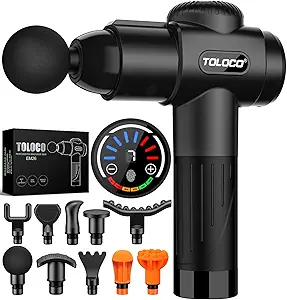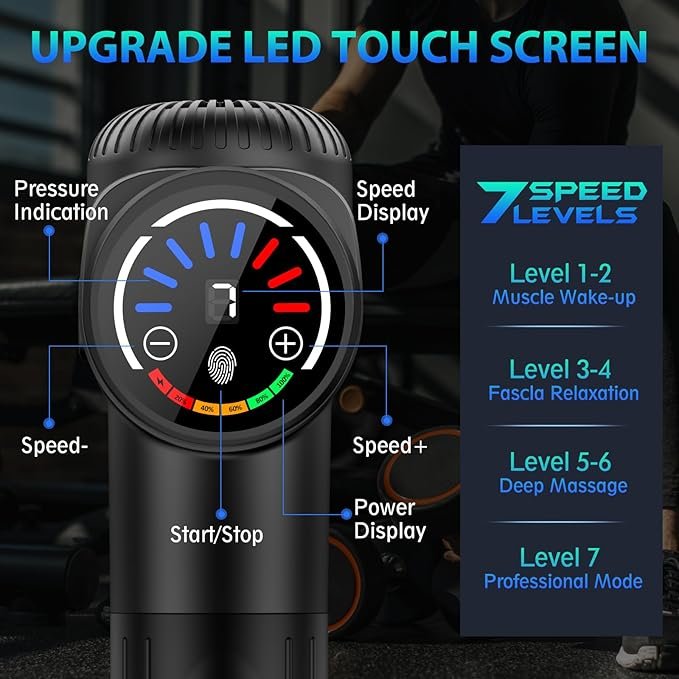Prioritizing recovery days in your fitness plan might be the most powerful, results-driving strategy you’re currently ignoring. In a fitness culture that screams “No Days Off!” and glorifies the daily grind, taking a day of rest can feel like an act of rebellion. We’re taught to equate soreness with success and exhaustion with effort, leading to a pervasive sense of guilt whenever we’re not pushing ourselves to the absolute limit.
But what if this entire mindset is wrong? What if the key to getting stronger, leaner, and faster isn’t found in one more grueling workout, but in the intelligent, deliberate act of doing less?
This is not a permission slip to be lazy. This is your wake-up call to start training smarter. Exercise is the stimulus that sparks the potential for change, but the actual, physical adaptations—the muscle growth, the fat loss, the strength gains—happen when you rest. This guide will dismantle the “hustle” myth and show you the science-backed truth: recovery isn’t the opposite of training; it is an essential part of it.

Table of Contents
The “Hustle” Myth: Why “No Days Off” is Sabotaging Your Progress
The idea that you must work out every single day is one of the most damaging myths in fitness. Pushing your body relentlessly without adequate rest doesn’t lead to more gains; it leads to burnout, plateaus, and injury. This state is often called Overtraining Syndrome, and it’s the fastest way to derail your progress.
When you refuse to prioritize recovery days, you are actively working against your body’s natural processes for growth and adaptation, ensuring you never reach your full potential.
The Science of Gains: What’s Actually Happening on Your Recovery Day?
To truly appreciate rest, you need to understand the incredible biological processes that unfold when you stop moving.
- Muscle Repair and Growth: When you lift weights, you create tiny micro-tears in your muscle fibers. This is the “stimulus.” During recovery, your body sends satellite cells to the site of the damage to repair these tears. It doesn’t just patch them up; it rebuilds them thicker and stronger than before to protect against future stress. This process, called hypertrophy, is literally how muscle is built. No recovery = no repair = no growth.
- Glycogen Replenishment: Glycogen is the primary fuel source your muscles use during high-intensity exercise. Your workouts deplete these stores. Recovery days, especially when paired with proper nutrition, are when your body refills these fuel tanks, ensuring you have the energy to perform at your peak during your next session.
- Central Nervous System (CNS) Recovery: Your CNS (your brain and spinal cord) is the master controller that sends signals to your muscles to contract. Intense, heavy, or explosive training is incredibly taxing on the CNS. Without rest, your CNS becomes fatigued, leading to decreased strength, poor coordination, and that “burnt out” feeling of mental fog.
Active vs. Passive Recovery: Which Is Right for You?
Not all recovery days have to be spent on the couch. There are two main types of recovery.
- Passive Recovery: This is complete rest. It involves no structured exercise and prioritizes activities like sleeping and relaxing. This is essential after extremely demanding workouts or when you feel run down.
- Active Recovery: This involves low-intensity, gentle movement. The goal is to increase blood flow to your muscles, which can help reduce soreness and speed up the removal of metabolic waste products. This is often more beneficial than being completely sedentary.
Examples of Active Recovery: A light walk, gentle yoga or stretching, a casual bike ride, or foam rolling.
Your Ultimate Recovery Toolkit: 7 Strategies to Master Your Downtime
Here’s how to make your recovery days as productive as your training days.
1. Prioritize Sleep
Sleep is the undisputed king of recovery. It’s when your body releases the highest concentration of growth hormone, which is critical for muscle repair. Aim for 7-9 hours of quality sleep per night.
2. Fuel Your Repairs (Nutrition)
Your body needs building blocks to recover. On rest days, don’t drastically cut your calories. Focus on:
- Protein: To provide the amino acids needed for muscle repair.
- Complex Carbohydrates: To replenish your glycogen stores.
- Healthy Fats & Micronutrients: To support overall hormonal function and reduce inflammation.
3. Hydrate Relentlessly
Water is essential for nearly every metabolic function, including transporting nutrients to your cells and flushing out waste. Dehydration can impair muscle function and delay recovery.
4. Embrace Active Recovery
As discussed, a 30-minute walk or a 20-minute yoga flow can do wonders for reducing muscle soreness (DOMS – Delayed Onset Muscle Soreness) and making you feel better than doing nothing at all.
5. Strategic Stretching & Mobility
Use your recovery days to work on your flexibility and mobility. This can improve your range of motion in exercises like squats and overhead presses, leading to better performance and fewer injuries.
6. Master Self-Massage & Myofascial Release
On your recovery days, actively helping your muscle tissue relax and release tension can dramatically speed up recovery. Foam rolling is a fantastic and affordable way to do this, acting like a deep-tissue massage to work out knots and improve blood flow. However, for those who are serious about optimizing recovery, technology offers a more powerful solution.

7. Manage Your Stress
High levels of the stress hormone, cortisol, can interfere with muscle growth and recovery. Use your recovery days to de-stress with activities like meditation, reading, or spending time in nature. Remember, your body doesn’t differentiate between life stress and training stress.
Our Top Recommendation for Pro-Level Recovery: A Percussion Massage Gun
A quality percussion massage gun is a game-changing investment in your recovery. These devices use rapid, targeted pulses to penetrate deep into muscle tissue. This percussive therapy can:
- Increase blood flow to a specific area far more effectively than a foam roller.
- Help break up stubborn muscle knots (adhesions).
- Dramatically reduce muscle soreness and stiffness.
- Improve your overall range of motion.
Think of it as having a physical therapist on call. While a foam roller is a great start, a percussion gun allows you to apply targeted, pro-level therapy to exactly where you need it most, making it the ultimate tool to prioritize recovery days and ensure you’re ready for your next workout.

How to Schedule Your Recovery Days
There’s no one-size-fits-all answer, but here are some smart templates based on your training frequency.
- For a 3-Day/Week Full-Body Plan: Your recovery days are automatically built-in on the non-training days.
- Mon: Train | Tues: Active Recovery | Wed: Train | Thurs: Active Recovery | Fri: Train | Sat: Active Recovery | Sun: Passive Recovery
- For a 5-Day/Week Training Split: You need to be more strategic.
- Mon: Train (e.g., Upper Body) | Tues: Train (e.g., Lower Body) | Wed: Active Recovery | Thurs: Train (e.g., Push Day) | Fri: Train (e.g., Pull Day) | Sat: Train (e.g., Legs) | Sun: Passive Recovery
Warning Signs: Are You Under-Recovered? (A Checklist)
Your body sends clear signals when you’re not resting enough. Listen to them.
- [ ] Do you have persistent muscle soreness that lasts for days?
- [ ] Are you feeling unusually irritable, moody, or unmotivated?
- [ ] Is your sleep quality poor, or are you having trouble falling asleep?
- [ ] Are you getting sick more often than usual?
- [ ] Has your performance in the gym stalled or even declined?
- [ ] Do you have a higher-than-normal resting heart rate in the morning?
If you checked two or more of these boxes, it’s a strong sign you need to prioritize recovery days more seriously.
Frequently Asked Questions (FAQ)
1. Is it okay to take two or even three rest days in a row?
Absolutely. If you had an incredibly tough week of training or you’re feeling particularly run down, taking a couple of consecutive days off can be exactly what your body needs to fully repair and come back stronger.
2. What should I eat on a recovery day?
Eat similarly to how you would on a training day. Keep your protein high to support muscle repair and consume plenty of complex carbs to refuel your glycogen. Don’t view it as a “cheat day,” but as a “refuel day.”
3. Does a 20-minute walk really “count” as active recovery?
Yes! The goal of active recovery isn’t to burn calories or build endurance; it’s simply to move your body gently and promote blood flow. A 20-minute walk is a perfect example.
Rest Is Where the Magic Happens
It’s time to change the narrative. Pushing through pain isn’t a badge of honor; it’s a sign that you’re not listening to your body. True strength lies in the wisdom to know when to push and when to pull back. By learning to prioritize recovery days, you are not taking a break from your training; you are giving your body the final ingredient it needs to achieve the results you’ve been working so hard for.
Ready to build a smarter, more sustainable fitness plan? Sign up for the Unplugged Routine newsletter for expert-designed programs, recovery tips, and the weekly wisdom you need to train for a lifetime.